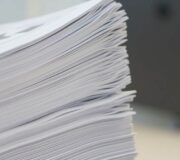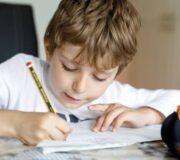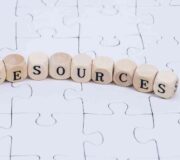Year 5 Maths Curriculum | Home Learning Toolkit For Parents of 9 or 10 Year Olds
Year 5 maths that 9 and 10 year olds follow in primary school is the first year of the upper Key Stage 2 national curriculum.
It’s a time where they start preparing for maths outside their own school – SATs, secondary school maths etc. Teachers will be introducing topics that demand more complex thinking, and also ‘mixing’ up the topics in the questions and reasoning they require Year 5 children to do. As a result Year 5 maths can seem a bit challenging to start with.
Whatever the primary maths scheme of work your school uses (White Rose maths is a popular one you may have heard of) Year 5 children across the country will broadly be expected to learn the same knowledge and skills by the end of their Year 5 maths lessons.
Now is not the time to worry. Your child will adapt as they always do! Drawing on our years of experience providing 9 and 10 year olds with Year 5 maths tuition we’ve put together this parents guide to the Year 5 maths curriculum.
Not only does it explain what key concepts they’re going to learn but also how they will be taught them so you can be better prepared to support them, and back up their learning were necessary.
Look out for links to more in-depth knowledge of some of the more complex topics like fractions, decimals and percentages and if any term we used sounds unfamiliar then just turn to our primary maths dictionary for help.
Don’t miss these free Year 5 maths worksheets or the rest of our maths homework help for Year 3 Maths, Year 4 Maths and Year 6 Maths.
- What the Year 5 Maths curriculum says
- The Year 5 Maths Programme of Study
- Number and Place Value in Year 5 Maths
- Addition and Subtraction in Year 5 Maths
- Multiplication and Division in Year 5 Maths
- Fractions, Decimals and Percentages in Year 5 Maths
- Measurement in Year 5 Maths
- Geometry in Year 5 Maths: Properties of Shapes
- Geometry in Year 5 Maths: Position and Direction
- Statistics in Year 5 Maths
What the Year 5 Maths curriculum says
The principal focus of mathematics teaching in upper key stage 2 is to ensure that pupils extend their understanding of the number system and place value to include larger integers. This should develop the connections that pupils make between multiplication and division with fractions, decimals, percentages and ratio.
At this stage, pupils should develop their ability to solve a wider range of problems, including increasingly complex properties of numbers and arithmetic, and problems demanding efficient written and mental methods of calculation. With this foundation in arithmetic, pupils are introduced to the language of algebra as a means for solving a variety of problems. Teaching in geometry and measures should consolidate and extend knowledge developed in number. Teaching should also ensure that pupils classify shapes with increasingly complex geometric properties and that they learn the vocabulary they need to describe them.
By the end of year 6, pupils should be fluent in written methods for all 4 operations, including long multiplication and division, and in working with fractions, decimals and percentages. Pupils should read, spell and pronounce mathematical vocabulary correctly.
The Year 5 Maths Programme of Study
The national curriculum states that in Year 5 there should be a focus on building a strong foundation for some of the more complex mathematical ideas that will eventually crop up at secondary school.
This includes, but is not limited to, securing knowledge in:
- Place value – Reading, writing, ordering and comparing numbers to at least 1,000,000 and determining the value of each digit.
- Addition and subtraction – Adding whole numbers with more than 4 digits using formal written methods.
- Multiplication and division – Multiplying and dividing numbers mentally, drawing upon known facts e.g. the times tables.
- Fractions – Multiplying proper fractions and mixed numbers by whole numbers.
- Measurement – Converting between different units of metric measure; calculating and comparing the area of rectangles.
- Geometry – Identifying 3-D shapes and drawing angles; identifying, describing and representing the position of a shape following a reflection or translation.
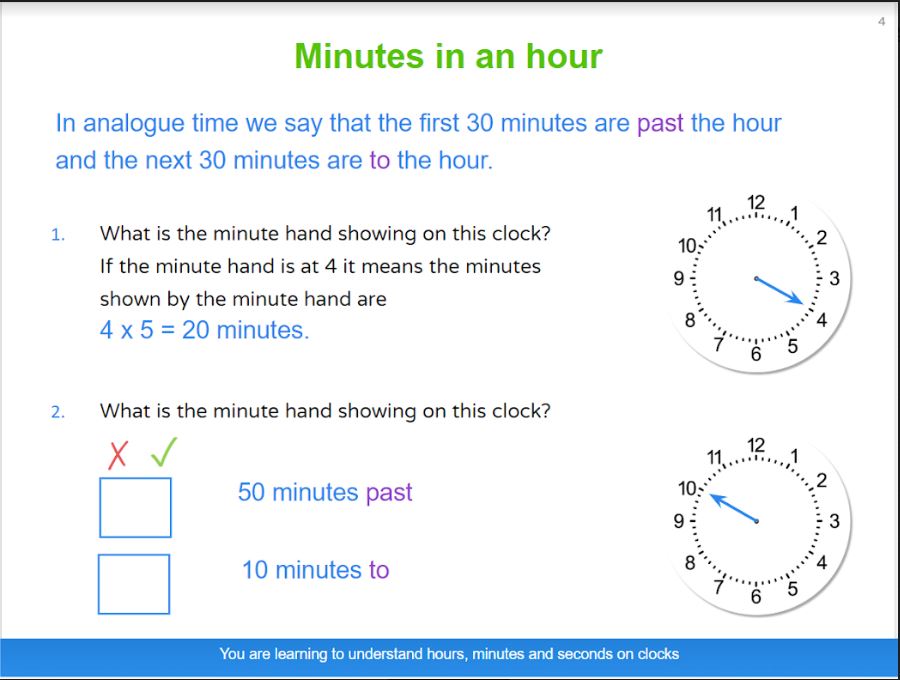
To read more about the national curriculum for Year 5 (and Key Stage 2 as a whole) and what is expected of children aged 9 and aged 10 when it comes to maths, take a look at the government national curriculum website.
With so much maths being introduced, it’s important to talk about it!
Talking to your child about maths throughout this turbulent time is crucial. They may begin to feel overwhelmed by all of this new knowledge being imparted upon them, and having a parent or career to talk to will really help to ease this burden.
Many 9-year-olds and 10-year-olds will be going through an emotional change too. Friendship groups become more complicated, self-image comes into play and the very real pressure of exams looms on the horizon.
It can be a bumpy time for many, but having an open dialogue around challenges makes the journey much smoother.
Fortunately, maths is a great tool for practising these kinds of conversations, and what follows is some of the key things your child will face in maths this year, so read up and get a firm understanding of what maths for Year 5 is all about!
Free Year 5 Maths Worksheets and Tests
Register now with the Third Space Maths Hub (Use Chrome) to download all our free Year 5 maths worksheets, workbooks and resources
Download Free Now!Number and Place Value in Year 5 Maths
The national curriculum says that in Year 5, children will learn to:
- read, write, order and compare numbers to at least 1 000 000 and determine the value of each digit
- count forwards or backwards in steps of powers of 10 for any given number up to 1,000,000
- interpret negative numbers in context, count forwards and backwards with positive and negative whole numbers, including through zero
- round any number up to 1,000,000 to the nearest 10, 100, 1000, 10,000 and 100,000
- solve number problems and practical problems that involve all of the above
- read Roman numerals to 1000 (M) and recognise years written in Roman numerals.
Helping at Home With Year 5 Place Value
Once your child (and to an extent you) are feeling confident with most of the above place value topics, you can add prime numbers into the mix. This may be tough maths for 9-year-olds, but nobody improves without being challenged!
For anyone who may have forgotten exactly what a prime number is, it can be classed as:
“A whole number that can not be made by multiplying other whole numbers together.”
Or
“Any number that is divisible only by itself and 1.”
Prime numbers include 2, 3, 5, 7, 11 etc.
Why not try challenging them to come up with as many numbers as possible that have only two factors (for example, the number five can only be made by multiplying one and five)? Or, alternatively you can have a race against your child to see which of you can name the most prime numbers in a minute. This is a good excuse to make sure your maths skills are still up to scratch as well!
Read more: Highest Common Factors and Lowest Common Multiples
If you find that your child is really struggling with the level of place value knowledge required in Year 5 it might be worth breaking things up a bit with some place value games. These are fun to do at home and will help you to build on their knowledge in a non-threatening way.
Year 5 Number and Place Value Activity: Prime numbers card game
Here is a great Year 5 maths activity that can help your child secure prime number knowledge using a deck of cards.
Step 1: Grab an ordinary deck of cards.
Step 2: Give each player half of the deck, but make sure they are dealt face down.
Step 3: Players take it in turns to flip a card over and place it in a pile in the middle. If the card that comes out is a prime number, the first person to exclaim “Prime!” wins the card and the rest of the stack.
Step 4: The winner is the player who manages to get the most cards when the game finishes. (We recommend ensuring that each game lasts for no longer than 5 minutes.)
Take a look at the video below to see how it works, and how you can bring a slight variation into the game if you want to speed it up!
Read more: The best KS2 maths games as chosen by teachers.
Addition and Subtraction in Year 5 Maths
In Year 5, the national curriculum says that children will learn to:
- add and subtract whole numbers with more than 4 digits, including using formal written methods (columnar addition and subtraction)
- add and subtract numbers mentally with increasingly large numbers
- use rounding to check answers to calculations and determine, in the context of a problem, levels of accuracy
- solve addition and subtraction multi-step problems in contexts, deciding which operations and methods to use and why.
Helping at Home with Addition and Subtraction in Year 5 Maths
By the end of Year 5, children should be able to add larger numbers using the formal written method, including four-digit numbers.
Below is an example of how to use the formal method of addition, broken down step by step. Having an example like this with you can be useful when your child is practising addition, so they have something to refer to if they get stuck.
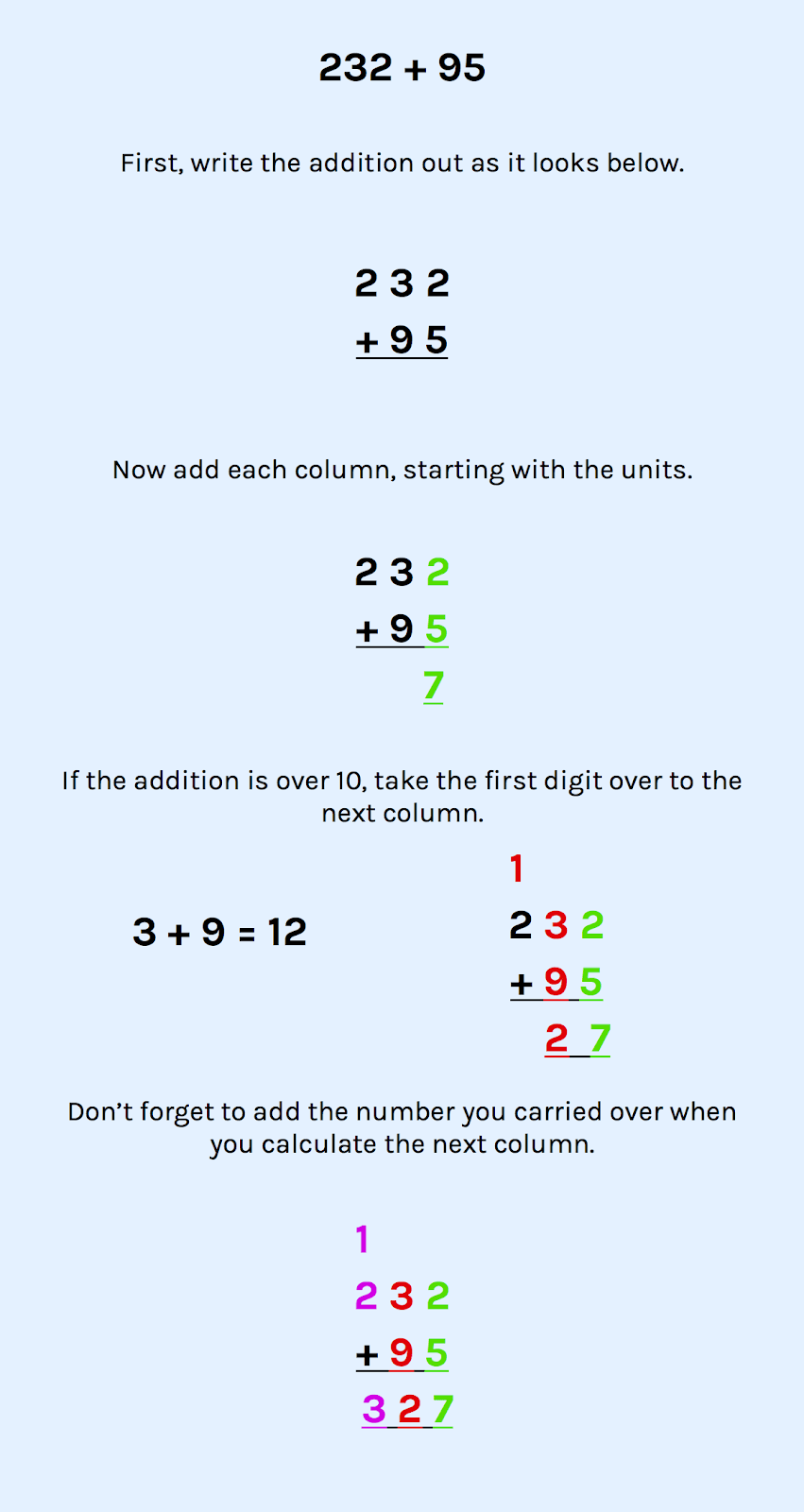
Subtraction
Make sure you practise subtracting larger numbers too, using the written method as broken down below.
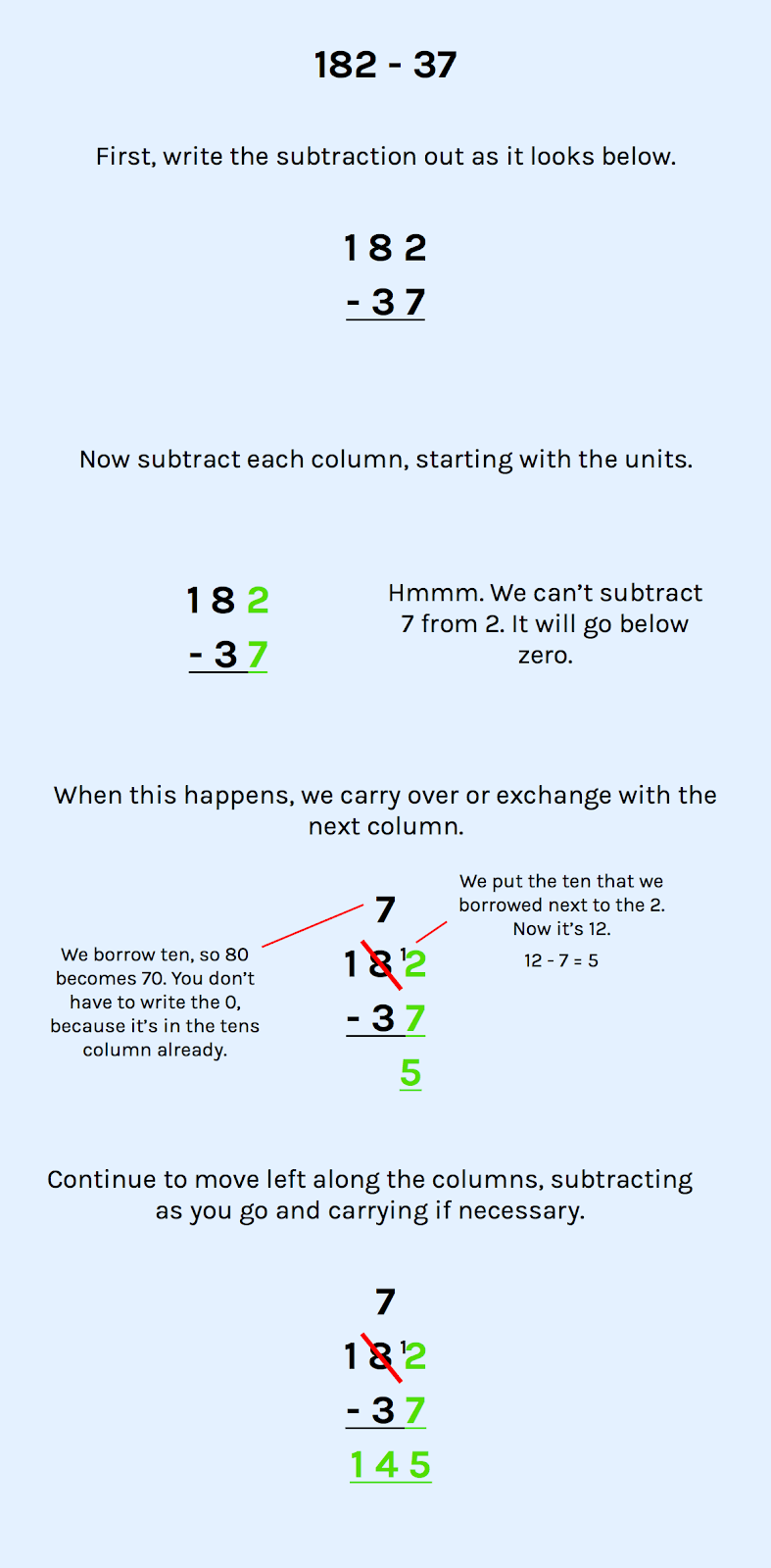
Being able to carry numbers over accurately is a key part of written addition and subtraction, so it’s worth going over this with extra focus.
Multiplication and Division in Year 5 Maths
In Year 5, the national curriculum says that children will learn to:
- identify multiples and factors, including finding all factor pairs of a number, and common factors of two numbers
- know and use the vocabulary of prime numbers, prime factors and composite (nonprime) numbers
- establish whether a number up to 100 is prime and recall prime numbers up to 19
- multiply numbers up to 4 digits by a one- or two-digit number using a formal written method, including long multiplication for two-digit numbers
- multiply and divide numbers mentally drawing upon known facts
- divide numbers up to 4 digits by a one-digit number using the formal written method of short division and interpret remainders appropriately for the context
- multiply and divide whole numbers and those involving decimals by 10, 100 and 1000
- recognise and use square numbers and cube numbers, and the notation for squared and cubed
- solve problems involving multiplication and division including using their knowledge of factors and common multiples, squares and cubes
- solve problems involving addition, subtraction, multiplication and division and a combination of these, including understanding the meaning of the equals sign
- solve problems involving multiplication and division, including scaling by simple fractions and problems involving simple rates.
Helping at Home with Year 5 Multiplication and Division
Now is the time to clarify that tricky maths vocabulary. At this age your child should know their measurements from their multiplication, but there are still a number of other mathematical words and phrases that could cause issues down the line if they are not understood now.
Two of these terms are factors and products.
Factors and products might sound complicated, but they’re actually a great way of talking about multiplication without getting bogged down in the numbers.
If you’re feeling uncertain about factors and products, take a few minutes to look at this simple diagram which gives you some examples for each term.
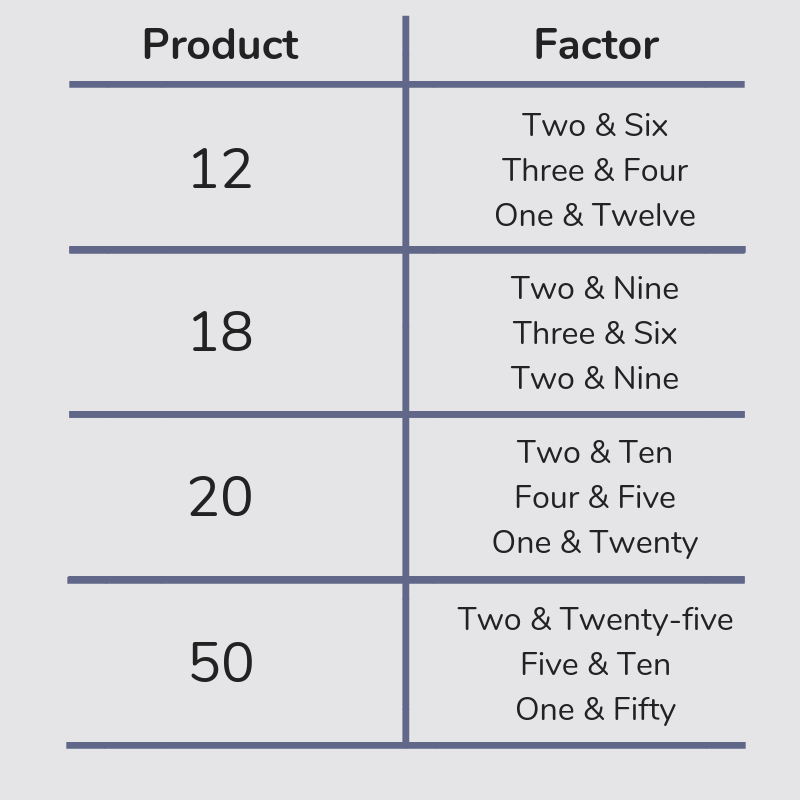
Year 5 Multiplication and Addition Activity
To help secure factor and multiple knowledge in your child, It’s really important to make sure you practise using these terms whenever you can.
For example, if you say twelve (the product or answer), your child could answer three and four, or two and six (the factors, or numbers that multiply together to make the product).
Fractions, Decimals and Percentages in Year 5 Maths
In Year 5, the national curriculum says that children will learn to:
- compare and order fractions whose denominators are all multiples of the same number
- identify, name and write equivalent fractions of a given fraction, represented visually, including tenths and hundredths
- recognise mixed numbers and improper fractions and convert from one form to the other and write mathematical statements > 1 as a mixed number
- add and subtract fractions with the same denominator and denominators that are multiples of the same number
- multiply proper fractions and mixed numbers by whole numbers, supported by materials and diagrams
- read and write decimal numbers as fractions
- recognise and use thousandths and relate them to tenths, hundredths and decimal equivalents
- round decimals with two decimal places to the nearest whole number and to one decimal place
- read, write, order and compare numbers with up to three decimal places
- solve problems involving number up to three decimal places
- recognise the per cent symbol (%) and understand that per cent relates to ‘number of parts per hundred’, and write percentages as a fraction with denominator 100, and as a decimal
- solve problems which require knowing percentage and decimal equivalents of ‘half’,’one quarter’, ‘one fifth’, ‘two fifths’, ‘four fifths’ and those fractions with a denominator of a multiple of 10 or 25.
Helping at Home with Year 5 Fractions, Decimals and Percentages
It’s important to know the equivalent decimals and percentages to some common fractions by Year 6, so make sure your child has a good grip on these:
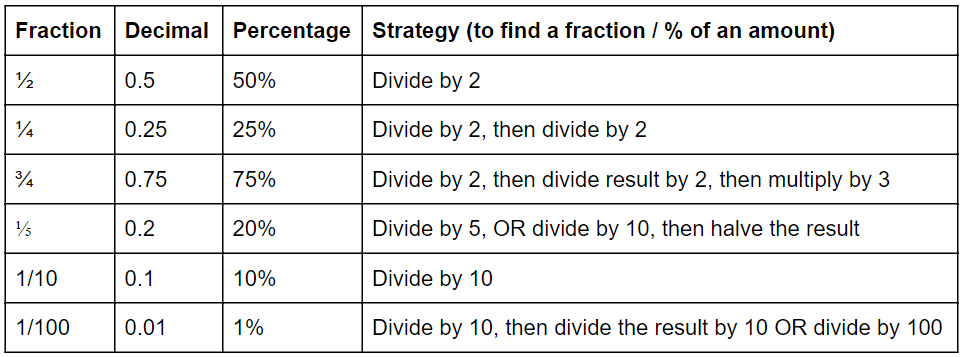
Paper One of the KS2 SATs usually has at least one or two questions that test this knowledge. For example:
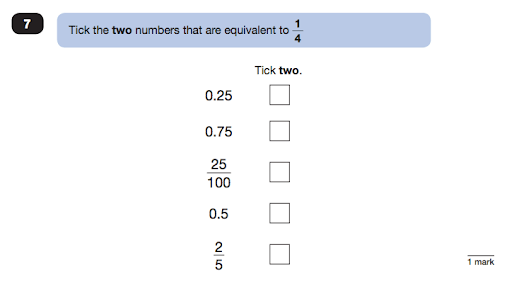
The arithmetic paper will also include some more simple questions on multiplying, dividing, adding and subtracting fractions.
Later on in Paper 2 and 3 (the reasoning papers) your child will encounter questions that not only ask them to compare fractions, decimals and percentages, but solve problems with mixed numbers.
For these sorts of questions a good understanding of the basics is key – if they already know that ‘half’ is the same as 0.5, your child will find it easier to work out how to express 3.5 as a fraction, for example.
Read more: What are equivalent fractions?
Measurement in Year 5 Maths
In Year 5, the national curriculum says that children will learn to:
- convert between different units of metric measure (for example, kilometre and metre; centimetre and metre; centimetre and millimetre; gram and kilogram; litre and millilitre)
- understand and use approximate equivalences between metric units and common imperial units such as inches, pounds and pints
- measure and calculate the perimeter of composite rectilinear shapes in centimetres and metres
- calculate and compare the area of rectangles (including squares), and including using standard units, square centimetres and square metres, and estimate the area of irregular shapes
- estimate volume [for example, using 1 cm3 blocks to build cuboids (including cubes) and capacity [for example, using water]
- solve problems involving converting between units of time
- use all four operations to solve problems involving measure [for example, length, mass, volume, money] using decimal notation, including scaling.
Helping at Home with Year 5 Measurement
As is the way with getting older, the numbers just keep getting bigger, and this is no different in Year 5 maths lessons.
Measurements, in particular, is an area of maths where this is the case, and this usually means converting between smaller measurement units (like centimetres) to bigger units (like metres).
Switching between these units is a crucial skill at this age and can be incredibly useful later in life too.
Measurement is a great everyday maths topic
Even when you are just going about your daily routine, you may not realise just how many opportunities there are to help your 9-year-old or 10-year-old practise their measurement conversion skills.
One of the best opportunities for them to test their skills is with food and drink.
At any opportunity, point out the measurements of food and drink and ask your child to convert them to a bigger or smaller unit. This works both ways of course, so ask your child to challenge you too when they see fit.
Forming a habit of converting every number they see will give them great place value skills, and you’ll catch any misconceptions around decimals easily this way.
Year 5 Measurement Activity: Imperial versus Metric
Fortunately, the main focus of the current curriculum is on the metric system (which is nice and easy). But in Year 5, your child will need to know about imperial units like pints, pounds and inches too.
Although it only makes up a small part of the curriculum, it’s worth explaining to your child that although we use the metric system for most things, there are still uses for imperial measurements (like pints of milk and gallons of petrol).
It’s confusing for most people, so getting to 9 years of age and finding out about a completely different set of measurements is baffling to say the least.
The best way to clear this up is to show your child how each system is used in real life. When you go to the supermarket, point out which products use which system, when you are driving show them that speeds are measured in miles per hour, and encourage them to work out their own height in feet and inches.
This will help your child to conceptualise the two systems as side-by-side tools. You could even get them converting between the metric and imperial measures if they’re feeling really confident.
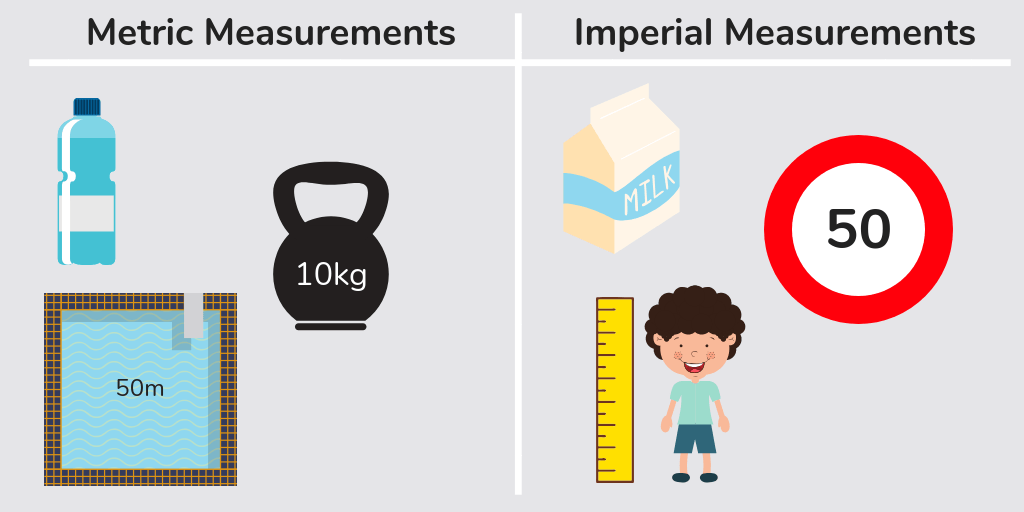
Year 5 Measurement Activity: Practise telling the time together
As the world becomes more and more digital, many children are growing up not being able to read analog clocks.
But telling the time is an important part of Year 5 maths, so make sure your child practises reading analog clocks in everyday life.
It’s as simple as reading the clock you walk past on the side of a building or a church.
You could ask them what time you need to leave the house to get to school on time or how long it is until their swimming lesson.
How else will they ever be able to read the iconic Big Ben?
But don’t forget digital!
Children also need to know how to tell the time on 24-hour clocks, so if they’re watching television or are on the computer, why not ask them to read the time to you or get them to work out how long it is until dinner?
If your child enjoys learning online, there are lots of fun interactive games and apps out there that they can use to practise telling time too, which cover everything from number lines to digital clocks, so your child can keep their knowledge refreshed and ready.
They often only take 5 or 10 minutes and are even free to access, but can make all the difference to your child developing their skills!
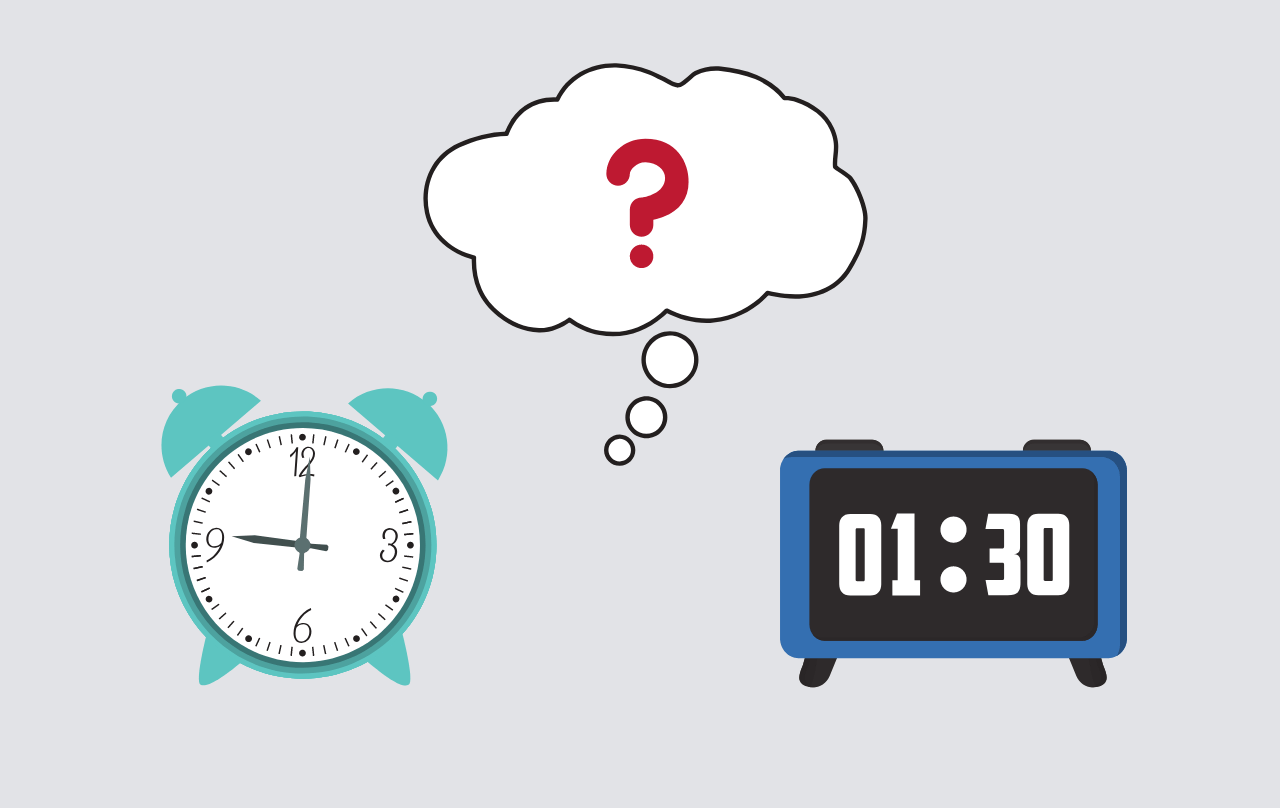
Geometry in Year 5 Maths: Properties of Shapes
In Year 5, the national curriculum says that children will learn to:
- identify 3-D shapes, including cubes and other cuboids, from 2-D representations
- know angles are measured in degrees: estimate and compare acute, obtuse and reflex angles
- draw given angles, and measure them in degrees (o)
- identify:
- angles at a point and one whole turn (total 360o)
- angles at a point on a straight line and half a turn (total 180o)
- other multiples of 90o
- use the properties of rectangles to deduce related facts and find missing lengths and angles
- distinguish between regular and irregular polygons based on reasoning about equal sides and angles.
Geometry in Year 5 Maths: Position and Direction
In Year 5, the national curriculum says that children will learn to:
- identify, describe and represent the position of a shape following a reflection or translation, using the appropriate language, and know that the shape has not changed
Helping at Home with Year 5 Geometry
Shape extends beyond simply recognising names and properties at this age. 9-year-olds need to know how to manipulate shapes on a grid. This is when accuracy skills come to the forefront, so make sure your child understands that reflection, rotation and translation all require a careful eye and a steady hand.
It’s very common for children who have strong number skills to find these three processes difficult, so be patient and practise often.
Refer to real life uses of these skills whenever you can. Transformations play a key role in animating cartoons, helping planes to take off and even in sports strategy.
Year 5 Geometry activity: Transformation of Shapes
Year 5 shape transformation using reflection
To begin with, practise reflection using a mirror.
To do this you’ll need to:
Step 1: Draw a selection of shapes on a grid, leaving enough room at the side for the next step.
Step 2: Reflect the shapes you have drawn by placing a small mirror next to the shape.
Step 3: Draw the reflected shape at the same distance from the mirror line as the original shape.
Something to note- You can use the squares to help you, but in secondary school, your child will draw reflections without a grid. For now though, it’s more important to get a solid understanding of the concept.
Year 5 shape transformation using rotation
A slightly trickier skill to master than reflection, rotation can be a great way to help your 9-year-old learn about shape transformation in a fun and interactive way.
To do this you’ll need to:
Step 1: Get some tracing paper and lay it over a piece of regular paper which has shapes on it.
Step 2: Draw on a square grid and use a ruler to copy the shape onto the tracing paper.
Step 3: Next, draw a dot to mark the centre of the grid.
Step 4: Match up this point with the centre of the grid and place your pencil on the dot. You’ll be able to rotate the tracing paper around the grid to whichever position you want!
This is a great way to improve spatial awareness for rotation – the trick now is to practise drawing the rotated shape without the tracing paper.
Year 5 shape transformation using translation
Translation is the more challenging transformation of the three because it requires careful attention (and who’s careful when they’re nine?).
This time, all you’re doing is moving the shape around the grid (without turning it). The easiest way to do this is to look at each corner (or vertex) of the shape at a time and follow the instructions for translation for each one. This way, you slowly piece the shape back together (rather than trying to move the whole thing at once, which can get confusing quickly).
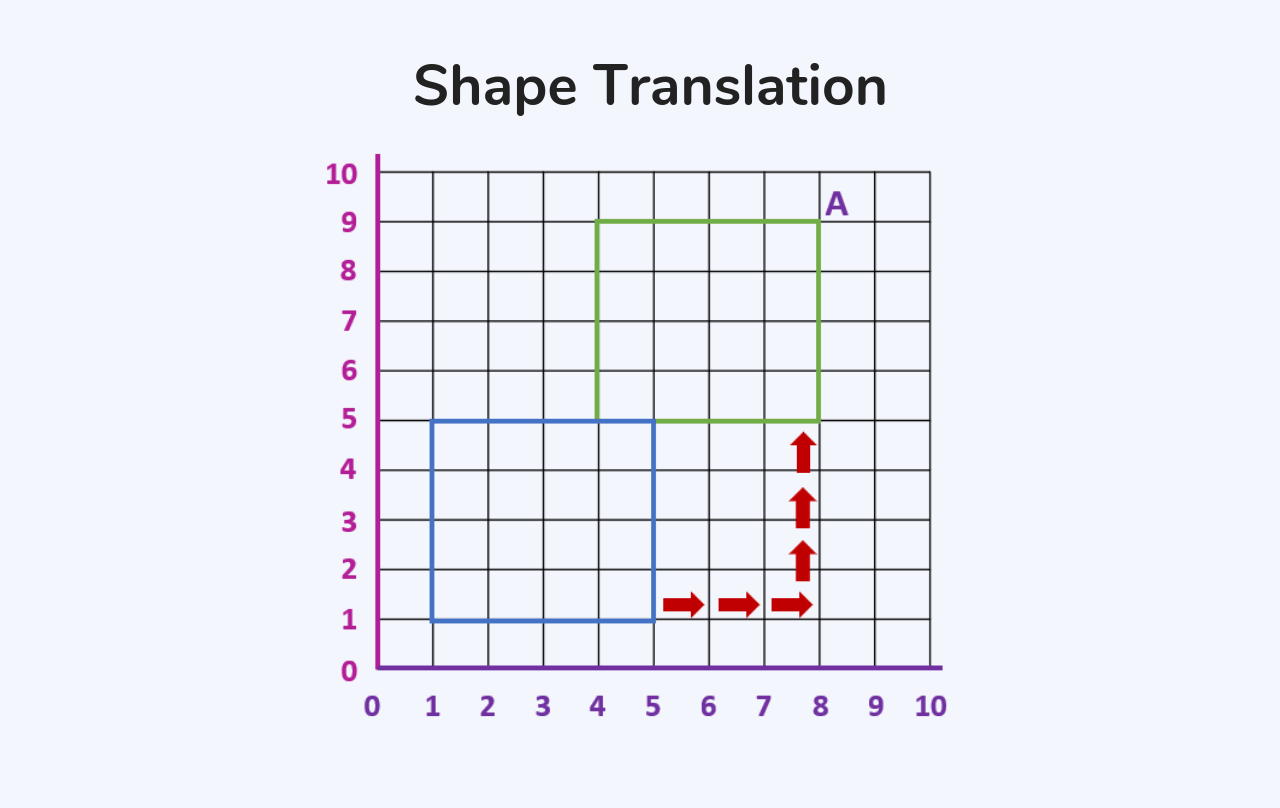
Statistics in Year 5 Maths
In Year 5, the national curriculum says that children will learn to:
- solve comparison, sum and difference problems using information presented in a line graph
- complete, read and interpret information in tables, including timetables.
Year 5 Statistics Activity
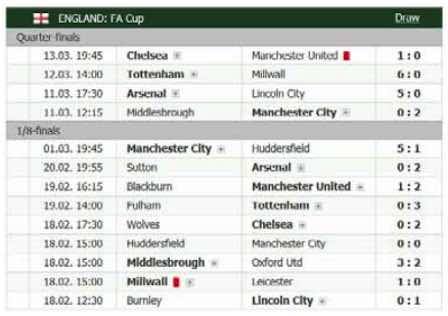
Use the table above to work out the answer to following questions:
- How many goals were scored in total?
- Which team scored the highest number of goals in both rounds?
- Which teams scored three goals in both rounds?
- Which match had the largest goal difference?
- Which match resulted in a draw?
- Calculate the mean, mode and median number of goals scored. Round any decimal numbers to one decimal place.
Read more: Mean in maths and Mean Median Mode
Year 5 problem solving
The real world is full of problems that need to be solved on a daily basis, so now is a good time to get your 9 or 10-year-old ahead with some problem-solving practice!
After learning how to crunch the numbers, applying them to word problems provides a meatier challenge for those who need it.
Rather than being presented with endless sums that they can whizz through, this switch in format encourages independence and resilience.
Confident mathematicians might find this frustrating at first, but if you take your time together, you’ll reap the reward of solving a tough problem.
The easiest way to make word problems more engaging is to own them. Take a look at a few word problems together and decide what makes a great word problem and what makes a terrible one.
You’ll notice that some are very clear, whereas others have ambiguous wording.
It’s necessary to identify this (even if you’re not solving them right away) so that your child understands the importance of reading questions carefully.
Once you both know your way around a good word problem, have a go at writing them for each other. Try some 2-step word problems too.
Model working out the problems your child writes for you. If it’s impossible to solve (perhaps there’s not enough information), then talk about it. Eventually, your child will be confident enough to write a word problem for their teacher (and we know that outsmarting your teacher is a major motivator when you’re nine).
Looking for more Year 5 maths support?
We’re here to help with any additional Year 5 maths support you need, from our guides on division for kids and the long division method, to these fun maths games and times tables games for all children to try at home or school.
Also in this series…
- Year 3 Maths Curriculum Toolkit for 6 & 7 Year Olds
- Year 3 Maths Worksheets
- Year 4 Maths Curriculum Toolkit for 7 & 8 Year Olds
- Year 4 Maths Worksheets
- Year 6 Maths Curriculum Toolkit for 10 & 11 Year Olds
- Year 6 Maths Worksheets
DO YOU HAVE PUPILS WHO NEED MORE SUPPORT IN MATHS?
Every week Third Space Learning’s maths specialist tutors support thousands of students across hundreds of schools with weekly primary school tuition designed to plug gaps and boost progress.
Since 2013 these personalised one to one lessons have helped over 150,000 primary and secondary students become more confident, able mathematicians.
Learn about the Year 3-5 programme or request a personalised quote for your school to speak to us about your school’s needs and how we can help.


